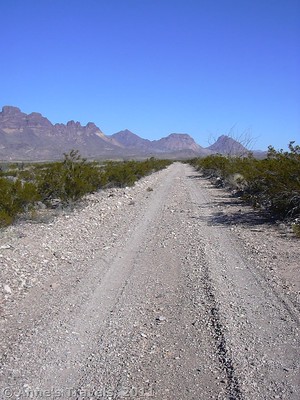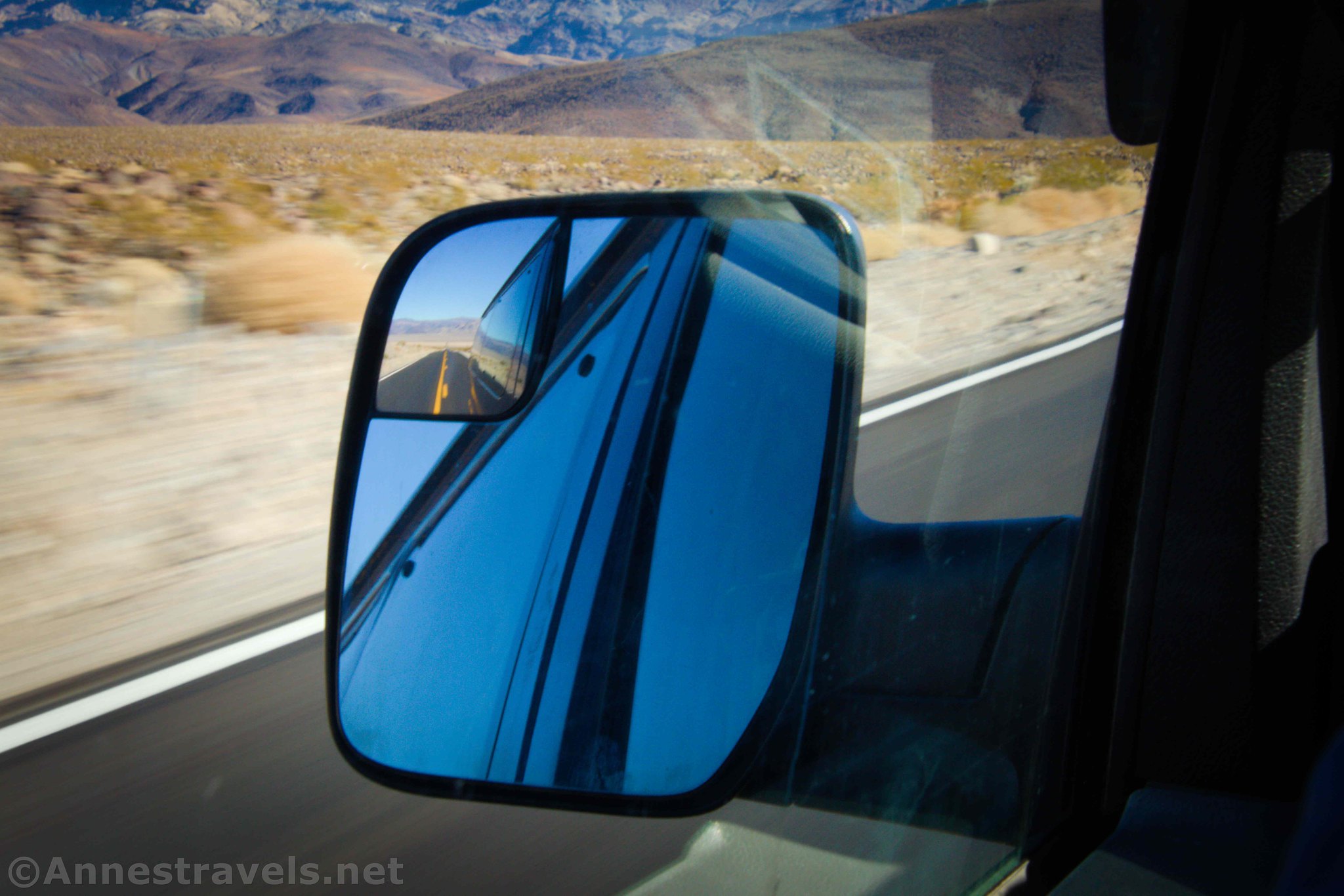I have attempted to create a system of rating road difficulty levels. These are based both on the general condition of the road and also on the most difficult obstacle that cannot be bypassed. The ratings are based on road conditions in dry weather. I recommend that you carefully consider your vehicle and its capabilities – as well as your capabilities as a driver – any road over a 0.9. Note that road conditions change frequently, especially on dirt roads, and the tread may be more challenging or easier than the rating I’ve assigned to it. Always check with the visitor center on road conditions before setting off into the backcountry.
0.0-0.9: Paved Roads
0.0 Limited access highway
0.1 Limited access highway in need of repair or difficult to drive
0.2 Divided highway
0.3 Rough divided highway (may be difficult to drive)
0.4 Highway with one lane in each direction
0.5 Rough highway with one lane in each direction (may be difficult to drive)
0.6 Paved road (not a highway)
0.7 Residential road
0.8 Rough paved road that may pose driving challenges
0.9 Rough paved road that is very rough, twisting, or difficult to drive

1.0-1.9: Unpaved but Accessible Roads
1.0 Well-maintained unpaved road that feels as though it’s paved
1.1 Good unpaved road with washboard. Suitable for low-clearance vehicles.
1.2 Unpaved road with washboard/potholes. Ok for low-clearance vehicles.
1.3 Unpaved road with potholes/washboard/rocks; ok for lower clearance vehicles who don’t mind roughing it.
1.4 Unpaved road with potholes/washboard/rocks; high clearance an asset but not required.
1.5 High clearance required due to rocks or a hump in the middle of the road
1.6 High clearance required due to road condition
1.7 Very rough unpaved road; high clearance required but does not require 4×4.
1.8 High clearance required; some small ledges, rocks, etc. 4×4 an asset but not required.
1.9 Rough unpaved road. High clearance, rugged vehicle required; 4×4 very helpful or may be required in some instances.

2.0+: 4×4 Roads
2.0 Rougher dirt road; may have mud holes, water crossings, small to medium rocks, loose dirt hill climbs, and sidehills. Usually easy grades and occasional use of 4×4. A stock Wrangler or a high clearance SUV with stock tires is fine.
2.3 Rough dirt road but without the challenge of a 2.5 rated road. Stock vehicles may be able to make it if they go slowly to avoid damage.
2.5 Rutted and rocky dirt road; even rugged 4×4 vehicles will need to move slowly. Low range is helpful for speed, traction control, and maneuvering rocks and ledges. A Jeep Wrangler or equipment is the minimum required; higher clearance and a two-speed transfer case are useful.
3.0 A very rocky and deeply rutted road. Low range 4×4 required due to loose traction and the difficulty of the terrain. Medium to large rocks, ledges, steep grades, slippery side-hills, and water crossings are normal. Expect body damage. A Wrangler or equivalent with rear axle traction device (limited slip or lockers) and front and rear attach points are required; some skid plates and higher clearance are recommended. You should also have aggressive tire tread and the ability to change the air pressure in the tires (up and down).

3.5 Terrain is very difficult with large rocks; steep hill climbs and descents may be required. Low-range 4×4 is required at times. Obstacles will require traction devices and may result in significant body damage. A Wrangler Rubicon with good skid plates, a lift, and traction device (locker ot limited-slip) on both axles are required. Three-ply or more on tires are recommended.
4.0 Very difficult terrain, often with badly eroded trails; obstacles require technical driving skills. High ground clearance, skid plates, oversize tires, excellent articulation, high ground clearance, and lockers on both axles are required. Very large rocks and deep ruts are common. Do not take these trails unless you know what you’re doing.
4.5 Potentially dangerous trail. Body damage, mechanical breakdown, and rollovers are possible. Very large and/or technical obstacles require technical wheel placement and very experienced drivers (who are not prone to vertigo). Winches, full roll cages, and body protection are strongly recommended.
5.0 Virtually impassable terrain. Winching will be required; bring spare parts, spare fluids, and the ability to weld your vehicle. Body damage, mechanical breakdown, and/or rollover quite possible. Only very tall suspensions, trail-tested, fully-modified vehicles should attempt these trails.
XTR If you think 5.0 roads are impossible, then you haven’t seen a XTR trail. Neither have I, so travel only at your own risk!
Many thanks to Steve Curtis and his site Jeep the USA for help with the 4×4 road difficulty ratings! See Steve’s ratings here: https://www.jeeptheusa.com/difficulty-ratings.html

